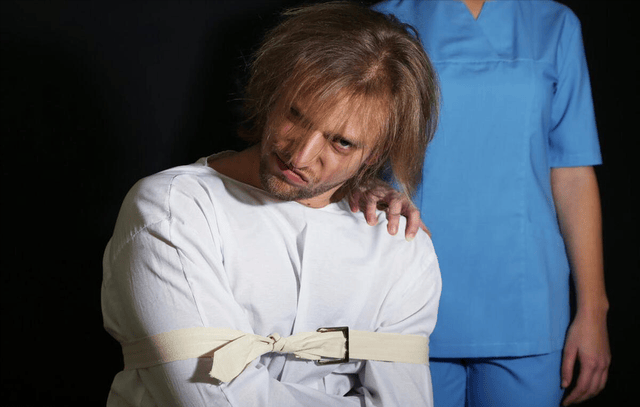If a person has a skin disease, a doctor can determine it at a glance. If they have a tumor, medical instruments can check it, and then the tumor can be surgically removed and subjected to a pathological examination for a diagnosis. However, if someone suffers from a mental illness, there are only changes in cognition, emotion, consciousness, and behavior, with no objective evidence of pathological changes detectable.
How do doctors prove that a patient has a mental illness, and how do they differentiate between a normal person pretending to be insane?
Rosenhan’s Experiment
In 1973, Stanford University psychology professor David Rosenhan conducted an experiment: he recruited eight people from various professions, three women and five men, trained them to uniformly claim that they frequently experienced auditory hallucinations, hearing unfamiliar sounds like dripping water, with no other abnormalities reported. They then visited several psychiatric hospitals for treatment, where all eight fake patients were diagnosed with schizophrenia and other mental disorders, and were admitted to the hospitals.
Despite actively cooperating with treatment and informing doctors that they no longer heard any hallucinations after being admitted, the doctors no longer believed them, thinking that besides schizophrenia, they had developed a delusional disorder. During their hospital stays, the doctors prescribed over 2,100 psychiatric medications. Fortunately, Rosenhan had already taught them to pretend to take the medications, then spit them out in the bathroom.
Ultimately, Rosenhan hired a lawyer to rescue the fake patients; by that time, they had been hospitalized for four years. With the documentation they collected from the hospital, they helped Rosenhan complete his paper. The conclusion of the paper revealed a terrifying reality: once a person is diagnosed as abnormal, all their behaviors and characteristics become labeled accordingly. If they claim to have recovered and seek discharge, it is seen as delusional behavior; if they say they are tired and want to sleep, it is interpreted as hypersomnia; being in a bad mood is viewed as depression, and having a temper is labeled as mania or hysteria… It seems that all behaviors can be matched to mental symptoms.
After Rosenhan’s paper was published, it greatly embarrassed the American psychiatric community. Consequently, several hospitals responded, stating that these fake patients first lied to the doctors, and based on this false information, the doctors made inferences and treatment decisions, ultimately leading to erroneous conclusions. It’s like when someone takes a sip of liquor while driving and then spits it out; if the police breathalyze them and get a high reading, but a subsequent blood test shows low alcohol concentration, can they blame the police for making a mistake? Rosenhan used lies to prove others were wrong, which itself contradicts logic.
Later, the psychiatric hospitals challenged Rosenhan to conduct the experiment again, claiming that this time, with precautions, they would be able to identify the genuine patients from the imposters. As a result, Rosenhan began the second phase of the experiment, during which psychiatric hospital doctors became more meticulous in their diagnoses and observations of inpatients, resulting in the identification of 41 imposters out of 193 patients within three months. However, Rosenhan announced that he had not assigned any imposters during the past three months.
Rosenhan’s experiment reflected, from both positive and negative perspectives, the fact that American psychiatrists at the time were unable to correctly distinguish between normal individuals and those with mental illness. On the other hand, there was extensive over-medication occurring within the psychiatric hospitals, and these medications had significant side effects, leaving them ultimately unaware of how many of these abnormal individuals there actually were.


